In October 2020, the 'Ancient Tenea' research work at Chiliomodi, Corinth, under the direction of Dr. Elenas Korka was completed.
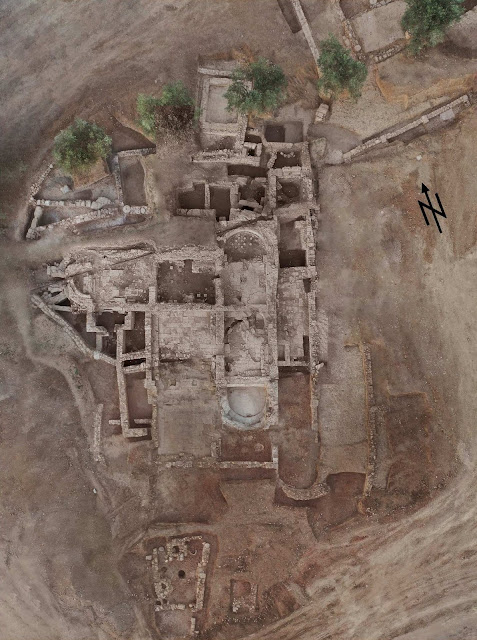 |
| Aerial view of the excavation site of ‘Ancient Tenea’ in Chiliomodi, Corinth [Credit: Greek Ministry of Culture, Tenea Project 2020] |
The excavations continued in the area of the bath complex that was located in 2019. To the west, the water supply for the baths were discovered. In the south, the excavation of the 'changing rooms' was completed, with a total area of 62 sq.m. The entire area is covered by clay floor slabs and stone built benches around its walls. The changing rooms to the east communicate with two new rooms that are identified with the tepidarium. One of them is a pool of 20 sq.m., and the second has on its floor structures that suggest the existence of baths.
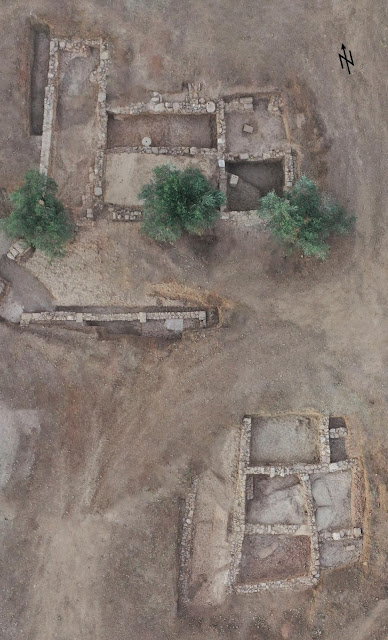 |
| Aerial view of the excavation site of ‘Ancient Tenea’ in Chiliomodi, Corinth [Credit: Greek Ministry of Culture, Tenea Project 2020] |
The bath complex seems to have been originally built in the time of Augustus with interventions and reconstructions until the late Roman times. However, its northern part may have been built on an Archaic wall associated with the use of the well investigated in 2019. An archaic deposit investigated this year north of the well yielded pottery, a bronze ring, bronze and bone fibulae, and an animal-shaped figurine. In the northwestern part of the facility, retaining walls were discovered, built largely with archaic spolia, a practice that applies to the entire monument. These architectural elements included triglyphs, entablatures, cornices, columns and two parts of ribbed columns with a diameter of 0.74m and indicate the existence of large public buildings of the Archaic period in the vicinity of the baths. Finally, north of the bath complex a new pool measuring 8.5 sq.m. was unearthed, with a floor of clay slabs covered with mortar and stone built benches along its eastern wall.
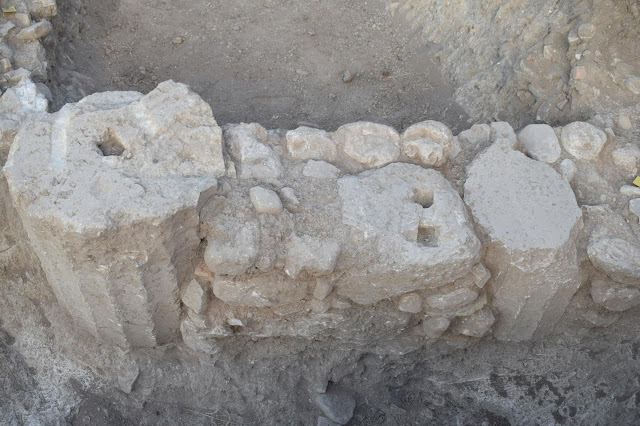 |
| Architectural pieces in secondary use [Credit: Greek Ministry of Culture, Tenea Project 2020] |
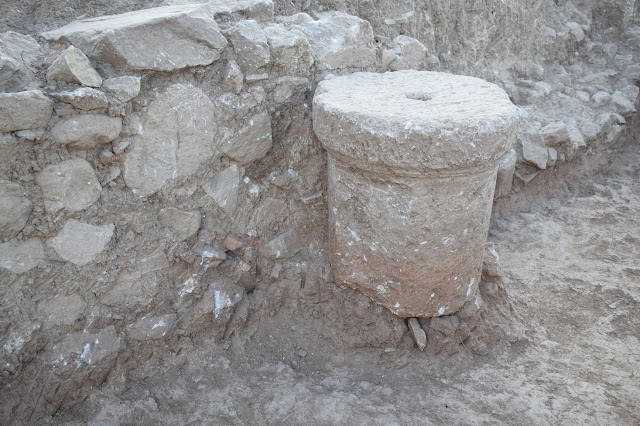 |
| Architectural pieces in secondary use [Credit: Greek Ministry of Culture, Tenea Project 2020] |
Two inscriptions were also discovered built into the walls of the bathing room. The first appears to be part of a public inscription with a painted cornice, and was found together with a silver obol from Argos dating to the beginning of the 5th century BC. The second inscription was on a statue base dating to fourth century BC. It bears the name ΠΕΙΣΑΝΔΡΙΔΑΣ (PEISANDRIDAS) and is of particular importance, as it is the first strong indication of the connection of Tenea with Tenedos, as indicated by ancient literary sources. The poet Pindar, for example, mentions Peisandros as the ancestor of the hegemonic family of Tenedos, the Peisandrids.
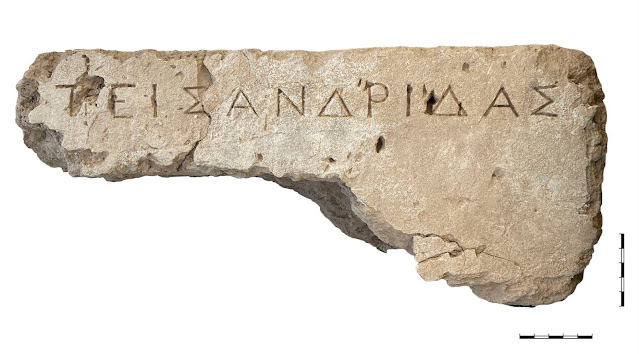 |
| Inscription on a stone base of a bronze statue, fourth century BC [Credit: Greek Ministry of Culture, Tenea Project 2020] |
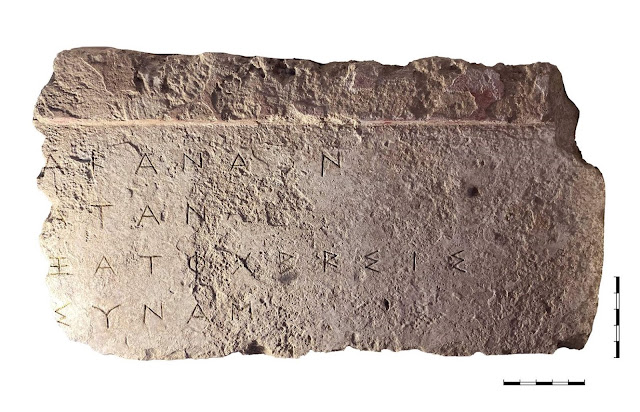 |
| Part of a public inscription, fifth century BC [Credit: Greek Ministry of Culture, Tenea Project 2020] |
The baths currently cover an area of 875 sq.m. even though the frigidarium has yet to be located. The size of the complex is an additional element that confirms their public use. Among other things, two small coin hoards were found in the baths, dating to the 4th and 5th centuries AD.
In the eastern area under investigation, extensive building foundations (282 sq.m.) were found in a north-south layout, which are identified with areas of commercial activity. These areas are connected to the baths via a cobbled road. Objects of commercial activity were found here: inscribed bronze scales, millstones, glass and ceramic vessels, a bronze pin, jewellery, iron objects such as forks, buckles, plates, and nails, a spear, a stone inscription, a clay inscription and over 300 coins. 72 bronze coins of the 5th century AD., and 29 coins of the emperors Marcian, Justin I and Justinian (AD 450 AD to AD 565), were found here, as well as a gold ring. In total, this year's excavation found more than 400 coins from different periods of antiquity.
In the area between the bath and the commercial premises, sections of walls which likely belong to yet another public space were revealed. This area will be systematically explored at a later time. Finally, a workshop area (47 sq.m.) relating to iron processing, was located south of the baths.
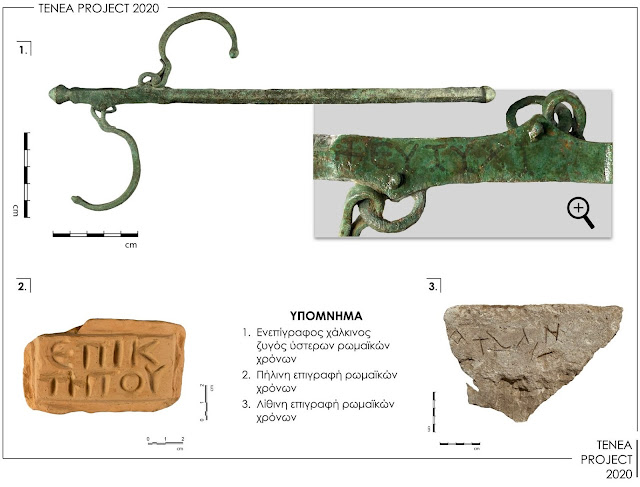 |
| i) Bronze buckle of the Roman period; ii) clay inscription of the Roman period; iii) stone inscription of the Roman period [Credit: Greek Ministry of Culture, Tenea Project 2020] |
The finds from the excavation indicate that the area was used continually from the 6th century BC until the 6th century AD. The numerous luxurious buildings and public facilities reveal the long settlement history of Tenea. Above all, the abundance of important architectural members from public buildings of the Archaic period that are incorporated into the masonry of Roman buildings is likewise remarkable.
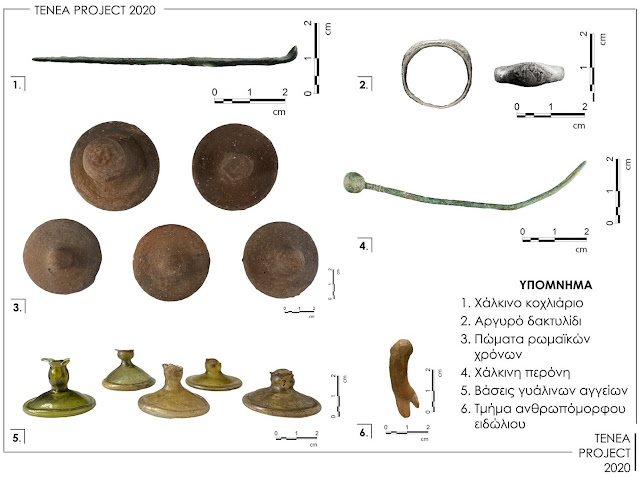 |
| i) Bronze pin; ii) Argive ring; iii) Roman period stoppers; iv) Bronze pin; v) bases of glass vessels; vi) piece of humanoid figurine [Credit: Greek Ministry of Culture, Tenea Project 2020] |
The program, under the direction of Dr. E. Korka, is supported by an interdisciplinary team of archaeologists headed by Mrs. P. Evangeloglou from the Ephorate of Corinth, as well as numismatists, anthropologists, surveying engineers, geologists and students from University Institutions of Greece. In the context of the above collaborations, modern methods of photogrammetric imaging, three-dimensional display of archaeological objects and anthropological material, as well as geophysical surveys were applied.
Source: Greek Ministry of Culture [trsl. TANN, October 26, 2020]
Support The Archaeology News Network with a small donation!
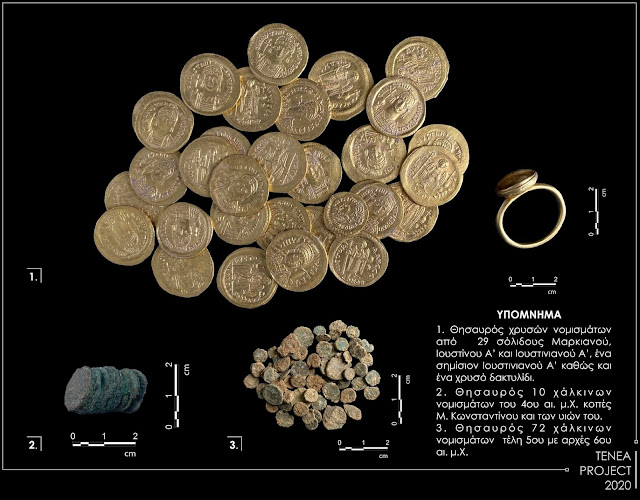
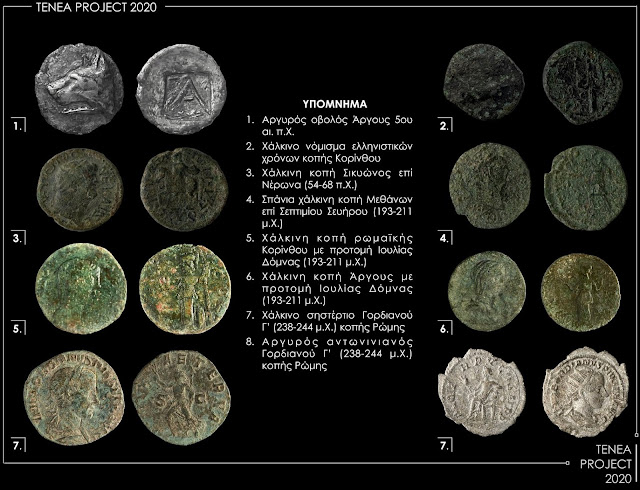
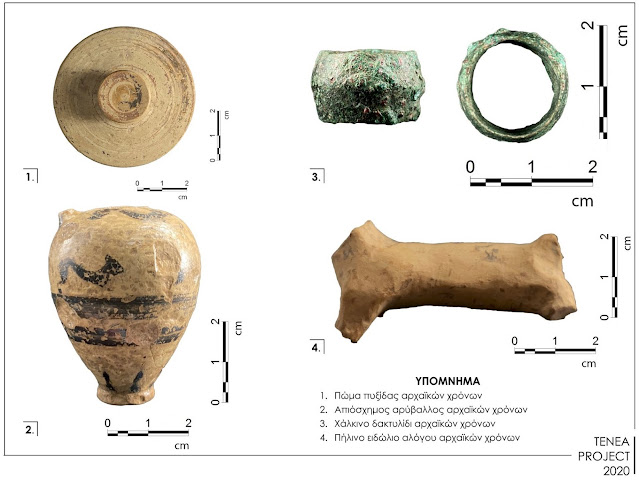
No comments:
Post a Comment